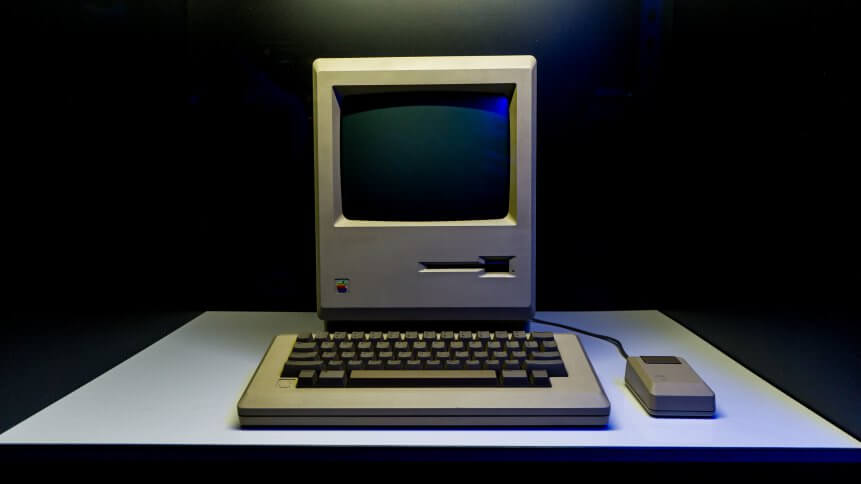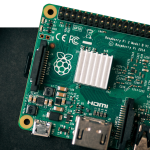The razor’s edge between legacy modernization & digital transformation

When it comes to disruptive innovation, most major industries are weathering dramatic change.
In consumer banking, young tech-centric companies are outpacing larger, more established counterparts. Centuries-old banks are struggling to pump out mobile apps and features fast enough to compete with cloud and mobile-first disruptors, whose business models are almost entirely digital.
In the automotive space, companies like Tesla have driven expectations of quality and experience to an entirely new plane, threatening to leave their fossil-fueled rivals in the dust.
It’s critical for established companies to apply digital thinking across everything they do or else they will continue to fall short of their newer, more agile counterparts, and their biggest roadblocks are the legacy systems that make them tick.
Unfortunately, simply adding a digital frontend on top of a mainframe legacy system runs akin to ‘slapping lipstick on a pig.’
The required timeframe to develop and release new features on top of an existing monolithic legacy architecture is far too lengthy, and businesses, whether they be in banking, transportation, retail or government, wind up suffering by way of slow forward progress.
Luckily, most CIOs are well-aware of the existential threat of slow transformation, and they’re throwing their top minds (and a lot of capital) at the problem to address the problem, but it’s not a simple task.
Cultural clash
The reality is, all business units and teams are impacted by the upheaval that comes with retooling the business to quickly react to change.
But mainframe owners and operators arguably stand to feel the greatest impact. The move from waterfall and siloed development operations in relatively modern IT environments to a DevOps-centric land of continuous integration is a difficult task.
But escaping the confines and ancient hieroglyphs of the mainframe world is an entirely different monster. So different, that many have shied away from it entirely, kicking the proverbial can down the road as far as they can, hoping for a miracle before they run out of road.
But the facts say retiring big iron as soon as possible is the right move. Based on benchmarks from our years of past experience, organizations who choose to move away from the mainframe to distributed systems are estimated to achieve monthly cost reductions of more than 60 percent.
Plus, the anxiety of keeping the rotting infrastructure running and looking for developers who understand mainframe assembler, COBOL, or CA Gen disappears, and applications and databases that were once black boxes of mystery are suddenly open for rapid evolution, integration, analysis, and change at the rapid modern pace that’s required to survive.
There are two major macro-level topics to address when it comes to a legacy IT modernization project.
YOU MIGHT LIKE

Busting three pervasive myths about AIOps
# 1 | Not all legacy is created equal
One of the biggest issues facing customers today is the continued confusion surrounding the industry’s lack of mutual agreement on the definition of the term ‘legacy.’
Legacy in the context of mainframes is a completely different, unique starting point compared to other legacy modernization projects where monolithic Java is refactored into microservices.
Legacy mainframe projects involve decades-old complex integrated applications developed in different languages and accessing different data stores— all supported by a complex operational and infrastructure landscape, requiring unique yet highly diminishing skills.
Before determining the ideal path to take with a legacy project, it’s critical to kick off with a comprehensive assessment in order to understand the details of your environment.
An assessment provides a guidepost with clear recommendations for various disposition strategies and pathways. The good news is that there are several different approaches available when looking to modernize your legacy-based assets. The ideal approach (or combination of approaches) will depend on several factors, including budget, timeframe, available skill sets and the future direction of your company, to name a few.
YOU MIGHT LIKE

How IT systems impact business culture
# 2 | Finding optimal results in the new world order
The second macro-level issue when it comes to legacy IT modernization is finding the optimal operating model and technology solutions to best increase productivity and better scale in the new world. This operating model consists of four main areas:
- Modern Application Architectures
- DevOps
- Automated Testing
- Agile Practices
For each of these four categories, the first step is to identify the principles and practices that are best for the organization. It’s critical to deeply dissect the business problem before you determine which flavor of service makes the most sense post-conversion.
For example, before determining the right service discovery/communication and container orchestration strategies within a modern architecture, you should determine how they fit into your desired business goals.
When agility or horizontal scalability is a business goal, then a microservices architecture is often employed. The design of this architecture, covering all non-functional requirements, should be based squarely on the business objectives.
The same is true for functional requirements. Services should be designed with business objectives in mind (bounded context) and aligned with product teams in the organizational structure.
In this way, more agile business and delivery principles can be employed. For some applications, the goal might be to move it to a cloud-native state, taking advantage of a microservices architecture. The most important thing to remember is that not all applications require the same treatment, nor should you move everything to the cloud just for the sake of doing so.
Disposition strategies need to be rooted in and aligned with specific business goals. For instance, if cost reduction is the only goal (MIPS and licensing reduction) a lift and shift strategy can be employed without re-architecture to microservices.
Modern delivery pipelines and continuous integration strategies are quite different than the typical release schedules of mainframe applications. Attention must be paid to the cultural issues, principles, and practices involved in these functions before employing automation and tools.
Likewise, “shift-left” test automation principles and integration into delivery pipelines must take principles and training into account before implementing changes.
The modernization of legacy mainframe applications is a little like walking a tightrope between an old world and a new world. On the one hand, monolithic mainframe legacy systems have been reliable workhorses of business computing for decades. Legacy IT systems built on mainframes were unquestionably powerful and stable.
On the other hand, as digital transformation has moved far beyond a buzzword, ‘nice-to-have,’ and into the mainstream realm of ‘must-have,’ the constraints presented by legacy environments such as slower time to innovate, sluggish TCO, and lack of agility, to name a few–have become stifling and restrictive to the point of being destructive.
Look back, move forward
Now more than ever, organizations must reduce their risk associated with aging technology, and focus on growing their businesses via access to newer, elastic IT methods.
While technology selection is an important aspect of these projects, cultural changes as part of the overall operational structure are equally critical, and where organizations often need the most help.
These application transformation projects are not to be taken lightly as they involve significant risks, but with the right strategy and experienced partners, you can eliminate the risk of migration, shorten the timeline for modernization, and lower the cost of conversion and re-platforming.
Start by finding the best team, with proven solutions. Make sure your partners stay with you on the modernization bus along your entire journey, all the way through to your final destination, which will always be a unique endpoint suited for your individual organizational goals.
The next step should be to conduct a comprehensive assessment in order to fully analyze and grasp the details of your legacy systems. This will form the roadmap and modernization plan for your legacy assets.
Striking the best balance between what’s old and new is a familiar problem. Instead of approaching modernization through a lens filled with an array of shiny pennies, take the time to understand and admire the inventiveness and resourcefulness of the original system, and of the team who very likely had to overcome various technological limitations when they created the older system.
Take the best parts of that legacy experience and product and look to modernize it for a cloud world, whether that’s cloud-ready, cloud-optimized or cloud-native. Shift your approach to then manage the processes with modern agile-based capabilities and newer technologies available for containerization, microservices, CI/CD and automated testing.
Learning from technology’s past will help you see the big picture, and combining that with modern solutions will enable you to generate the greatest value for the future. It’s the best of both worlds.
This article was contributed by Dave Tanacea, Chief Domains Officer at Ness Digital Engineering, and Barry Tait, Director of Modernization and Cloud Strategies, at Modern Systems.









